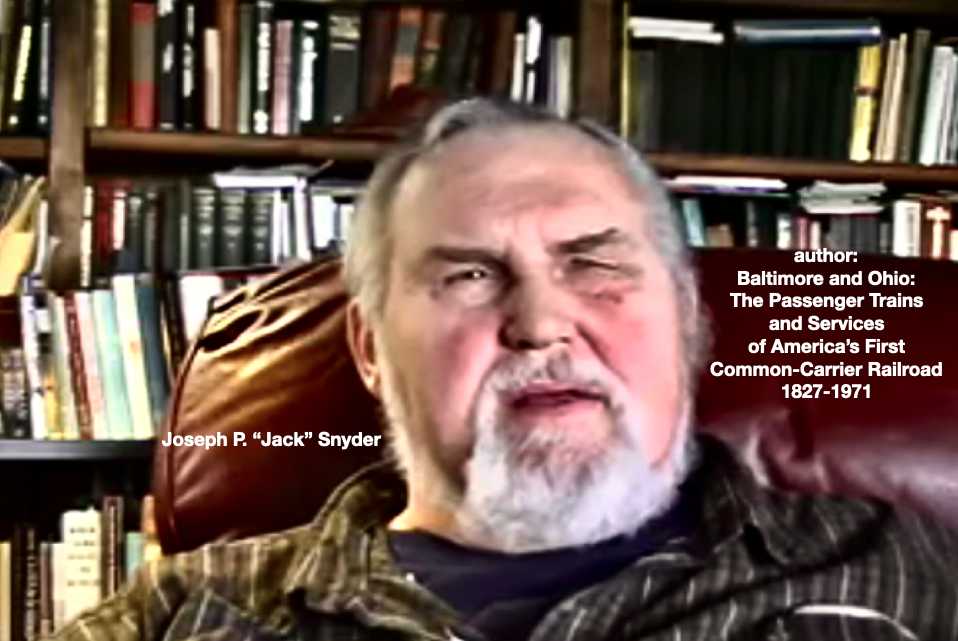670 words
VIDEO:: ‘Jack’ Snyder on the B&O and Lincoln’s Overlooked Role as the Railroad Visionary. – TRT: 4:30.

During the Civil War, the railroad was the effective lifeline for federal operations between Baltimore and Washington and the Midwest. As it happened, it went through part of rebel territory in Virginia which caused enormous problems operationally and politically and militarily, not only for the railroad but also for the federal government. There were many raids on the railroad during the Civil War. One of the famous raiders was John Singleton Mosby who was a Confederate colonel. But he was not the only one, there was another man by the name of Harry Gilmor who operated in the area around Jefferson County and the West Virginia Panhandle; and these raids had the tendency to upset and interdict the operations of the railroad itself, and in some cases, the railroad was out of operation for a fairly hefty period of time.
One of the things that happened was that one of J.E.B. Stuart’s lieutenants, a man by the name of Thomas R. Sharp, carried off Baltimore and Ohio locomotives from the city of Martinsburg and took them on wagons partly disassembled into the South where they were used on Southern railroads, about eighteen of them, I think, during the war. The B&O eventually got all of those locomotives back minus one at the end of the war, which had been destroyed. And, Thomas R. Sharp, who by then was a colonel, was actually hired by the B&O railroad to be its Master of Transportation at the end of the war. So, I guess that was a case of “If they can beat you, hire them.”
In any case, the railroad system of the United States had developed quite substantially before the war. By the time the Civil War started in 1861, the United States had more miles of railroad than all the other countries of the world combined, including those in Europe, and building railroads was the key to economic progress and improvement in the United States all during that period and subsequently.
The great planner of railroads during the Civil War was none other than the president, Abraham Lincoln, who had been a railroad lawyer in Springfield, Illinois before the war and had a grand vision for what needed to be done with the railroad in the United States. In 1862, he caused to be passed by Congress, the Pacific Railroad Act, which was later amended in 1864 and 1866. This act essentially authorized the extension of the railroad system of the United States throughout the western part of the United States which at that time had no railroads. So that, I think you could fairly say, that Abraham Lincoln was the chief planner and chief railroad visionary of his time. We’ve all heard a great deal about Lincoln’s Administration and the freeing of the slaves and the conduct of the Civil War which was tremendously important; but few people seem to know how important Lincoln’s vision for the expansion of the railroad system was and his vision included using the B&O railroad as the model – with its standard gauge of four-feet, eight-and-a-half inches – which was adopted in the Pacific Railroad Act. And, in fact, after the Civil War, all the railroads of the United States were re-gauged to that standard gauge even though many of them had begun as small local operations with very different gauges. So, in a sense, the B&O railroad was not only the major lifeline for the Union forces during the Civil War, operating between the East coast and the Midwest, but it was also the crucial model for the subsequent development of the national railroad system.
Made possible by the generous, community mind support of American Public University System. (apus.edu) Sentiments and views portrayed in this series do not in any way reflect the modern-day 21st century policies of the University, but are offered to encourage fact-based discussion on the evolution of the foundational values of the United States. 670 words
